Finding the Math in Storybooks for Young Children
Posted by Remya Padmadas on April 18, 2016It's important to share engaing books with children that have math learning as a primary goal.
Via MindShift.
When reading books, it’s important to realize that math is a broad subject. Clearly, a counting book or a shape book describing circles and squares are both explicitly about math, in the sense of the kind of formal math we usually learn in school. Although not explicitly about school math, Goldilocks entails relatively complex math ideas— order and correlation. Other storybooks deal in an informal way with patterns, spatial relations, measurement, addition and subtraction, and division — all of which are “math.” Indeed, it would be hard to find a non-math storybook that does not include everyday math in this broad sense. In fact, ordinary storybooks may contain more interesting math than do explicit math storybooks (and textbooks, too!).
This in turn raises the question of the type of math you want your child to learn — school math or embedded math? The answer is both. Children need to memorize the counting words, but also need to know that their order specifies relative magnitude. They need to memorize 1, 2, 3, 4, but also need to know that 3 is a bigger number than 2 because it comes after 2, but it is also a smaller number than 4, because it comes after 3. Memorizing symbols is not enough, just as knowing the everyday story is not enough. Eventually, the child needs to know how the informal ideas provide the meaningful basis for the formal math.
Read books that you both find interesting, amusing and full of wonder, books that will grow the child’s budding love of reading. Bypass boring stories, even if you think they are “educational.” Enjoy the story!
You can read the rest of the article here.
StoryWeaver recently created a series of openly licensed, digital-first books that celebrated math concepts from the simple to the slightly abstract. Created under an Oracle Grant, these books were guest edited by renowned children's author Roopa Pai and dealt with every day fractions, Fibonacci series, dates and distances small and great. Roopa wrote one of the stories, 'How Old is Muttaji?' - a delightful concoction of math, history and culture!
The books were part of a larger set of STEM books that were created to fill a gap in children's publishing in India: engaging non-fiction books and joyful, non-fiction narratives.
How Far is Far by Sukanya Sinha and Vishnu M Nair
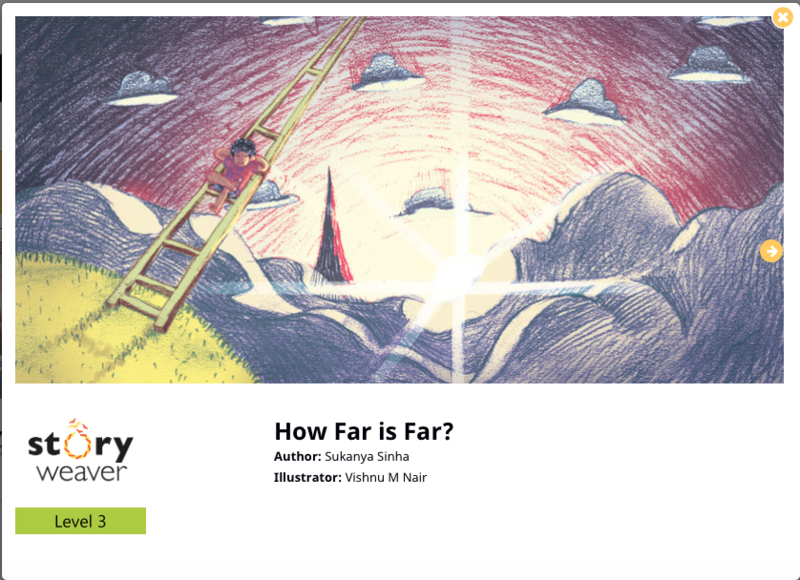
If you thought your friend's house on the other side of town was far away, you have clearly not read this book. Climb the Magic Math Ladder to get from where you are to the top of Mount Everest, to Kashmir, to the moon, the Sun, and ultimately, to the edge of the Universe, which is very, very, VERY far away indeed. Ready, steady, go!
Dum Dum-a-Dum Biryani by Gayathri Tirthapura and Kabini Amin
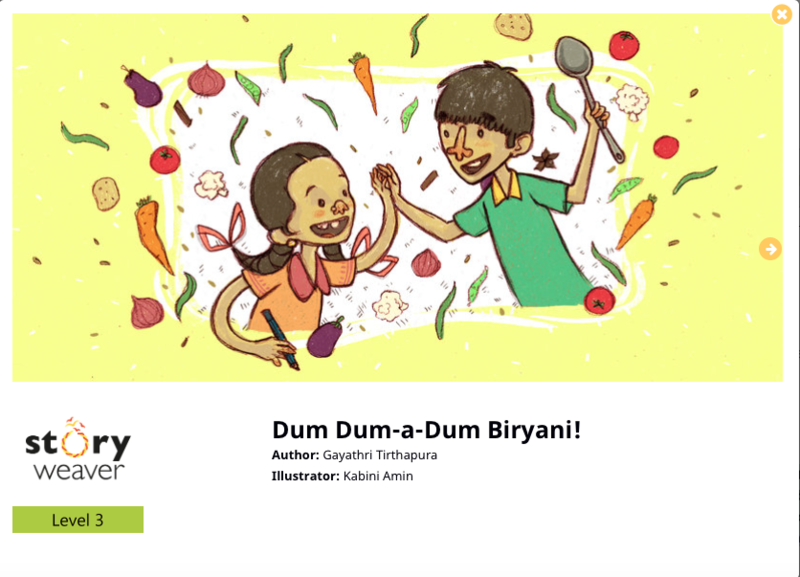
Basha and Sainabi are in a panic. Ammi is ill, and Saira aunty has just announced that she is arriving for lunch - with 23 other people! Budding chef Basha thinks he can cook Ammi's Dum Biryani, but her recipe only makes enough for 4 people. Math wiz Sainabi jumps in to help, declaring that she knows how to turn a 4-person recipe to a 24-person recipe. Do the siblings succeed in serving up a truly Dum Dum-a-Dum biryani? Read this book to find out!
The Fascinating Fibonaccis - by Shonali Chinniah and Hari Kumar Nair
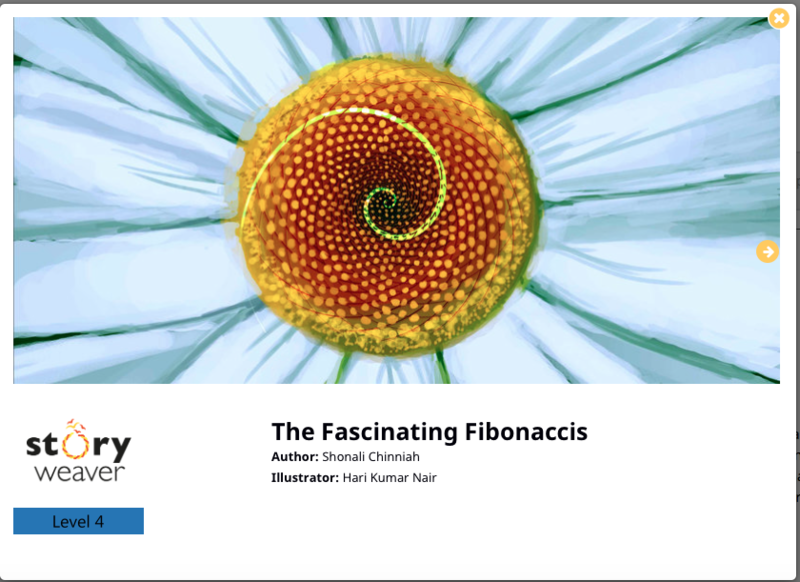
Almost a thousand years ago, an Indian scholar called Hemachandra discovered a fascinating number sequence. A century later, the same sequence caught the attention of Italian mathematician Fibonacci, who wrote about it. The Fibonacci sequence, as it began to be called, was straightforward enough - what made it fascinating was that this particular set of numbers was repeated many, many times in nature - in flowers, seashells, eggs, seeds, stars... Find out more inside this book!
How Old Is Muttaji? by Roopa Pai and Kaveri Gopalakrishnan
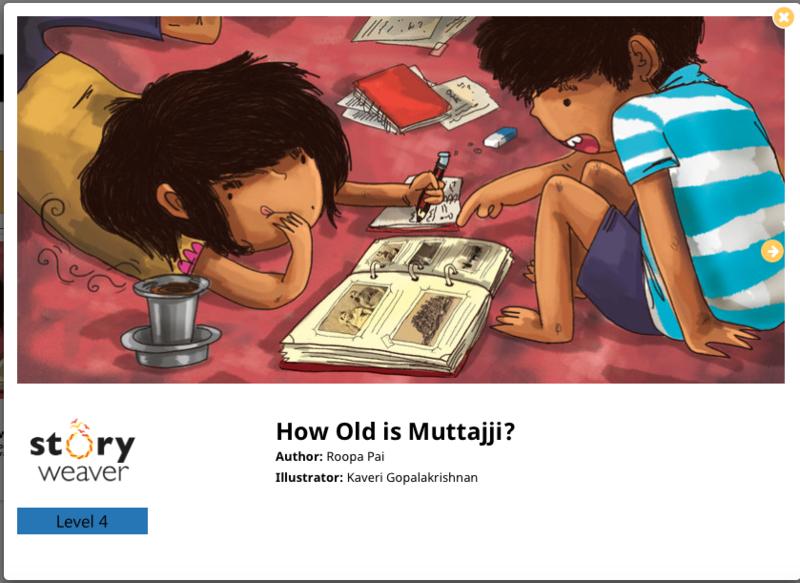
Putta and Putti know that Muttajji is really, really old. But exactly HOW old is she? Join the twin detectives on an exciting mathematical journey through Muttajji's memories and India's history in their quest to crack the big question.
Have a look at these digital books, which are all available to read, download and print for sharing absolutely free! The books are also available in a number of Indic languages, and if you'd like to translate the book in to a language you're fluent in, you can use our translate tool!
Be the first to comment.In praise of translation… and translators
Posted by Amna Singh on September 29, 2018Amelia Bonea is a Research Fellow at the University of Heidelberg and author of the book The News of Empire: Telegraphy, Journalism, and the Politics of Reporting in Colonial India, c.1830-1900 (New Delhi: Oxford University Press, 2016). Originally from Romania, she has lived and worked in Japan, Australia, Germany and the United Kingdom. When not engaged in academic research, she likes to read and translate children’s literature, most recently on StoryWeaver.
I recently read Herta Müller’s ‘The Space between Languages’ on Asymptote. It is a speech about translation and translators she gave in Prague in 2012. It is also a speech for translators, more specifically for the writer and journalist Radka Denemarková, who translated some of Müller’s work into Czech. People tend to like—or, indeed, dislike—Herta Müller’s writing for a variety of reasons, but one of the things I always admired about her is her seemingly effortless ability to make you look at words (and worlds) from surprising new angles. For instance, this is Müller on her experience of learning Romanian as a fifteen-year old recently transplanted to town from her dialect-speaking German village:
When your surroundings only speak what you can’t speak, you listen to the language along with the whole region. And if you stay long enough the time in the region learns the language for you.
In her Prague speech, Müller confesses that she ‘wouldn’t dare to translate, although [she is] fluent in Romanian’. But for me, Herta Müller is, despite her statement to the contrary, exactly that: a translator of words, languages, emotions, experiences, histories. I don’t think she can escape that predicament: it is inseparable from the experience of learning a new language. Learning a new language isan exercise in learning to translate. Learning to live in a different country, under a different political regime, like Müller did, is also an exercise in learning to translate.
Müller’s speech made me think that translation is rarely a solitary experience. That ‘space between languages’ she so eloquently describes is often populated with people who help us navigate our way between words and worlds. Perhaps unsurprisingly, they tend to be the same people who help us navigate our way through life.
I was reminded of this in the course of conversations with the translators who helped my own story to find a voice in other tongues. Last year, when I was still working for the ‘Diseases of Modern Life’ project at the University of Oxford, I collaborated with the StoryWeaver team to publish a small illustrated book about the history of telegraphy. It was an attempt of sorts to translatemy academic research into a register that would appeal to an audience we often forget to engage: children. The Magic Mango is now available in five Indian languages - Bengali, Hindi, Kannada, Marathi and Tamil - in addition to English, French and Romanian. It was recently read at a popular event at the local library in my hometown in which children aged 6-12 also learned to translate their messages into the sparse language of the Morse Code.
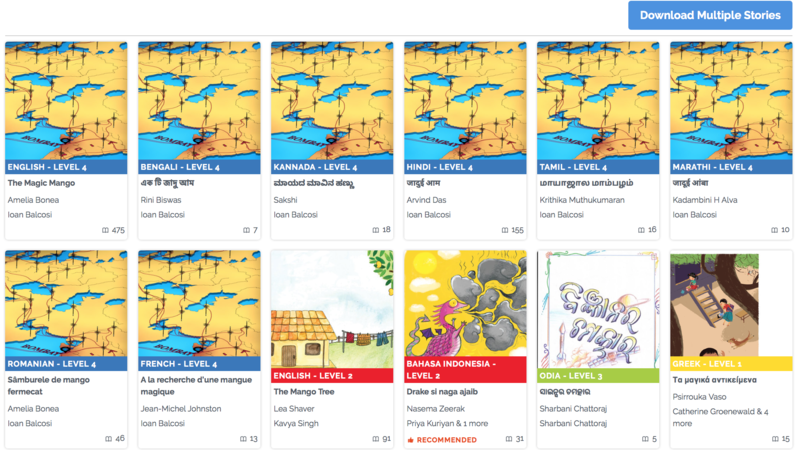
I asked my fellow translators to share some of their experiences of translation with me. As I was reading through their responses, I realized there was a common thread that ran through them. They all spoke about translation as a string of conversations: with themselves, with others, with the past, even with technology. A string of conversations whose aim was to produce a text that would ‘sound well’ in the target language, while also remaining faithful to the English original.
Arvind Das, who worked on the Hindi translation, read the story aloud to his daughter and used her reactions as a guide. As a journalist who works in English and Hindi, Arvind is a seasoned translator. One of his main concerns was to find age-appropriate and culturally sensitive language to match the technical vocabulary of telegraphy. This included words like ‘message’, ‘clerk’, ‘engineer’, etc., which, he felt, children nowadays were more likely to use in English rather than their Hindi equivalents (‘sandeśa’, ‘kirānī’ or ‘abhiyantā’).
Jean-Michel Johnston’s translation into French also drew on conversations with members of his family - in this case, his mother - but in the end he settled for a different conclusion, namely that the latest linguistic fashion might not necessarily be the most aesthetically pleasing one. Jean-Michel’s discussions with his mother revolved around the choice of vocabulary and tenses: should the story be translated into the ‘passé simple’, the tense of his own childhood’s stories and indeed, how he had been taught to write in school, or should it be written in the ‘passé composé’ which, his mother argued, is being increasingly used nowadays, in an attempt to simplify the language? In the end, it was the former option that won this linguistic battle. Why? Because the ‘passé composé’, said Jean-Michel, made ‘everything sound so jilted, bitty, stunted and … difficult to alternate in the chronology/timeline of the story’.
The old - this time in the guise of technology - was also present in Sakshi’s account, who translated the story into Kannada. Once she was done, she tried to type it out, only to find ‘that neither of the two dominant Kannada softwares currently used can be installed on Mac’. She ended up using one of the online platforms available, gradually teaching herself to type in a language in which she was only used to writing. Sakshi’s other concern was about translating place. The original story is set in Bombay/Mumbai, but ‘the language [she] was using for the description of mangoes, the communication between the child and the clerk, and a few other minor details made [her] feel as if they were located in a smaller town’. As she put it, ‘It [was] more to do with processing the narration within my head in the presence of my native language, which made me “see” the story in a different place’.
Finally, Krithika Muthukumaran’s account of translating the story into Tamil suggests that translation can also mediate a different type of encounter with the past, one that has potentially therapeutic effects. In her case, it was her grandmother who helped her navigate the space between languages by scrupulously checking and commenting on each of her paragraphs. As Krithika wrote, ‘[Grandmother] said it made her feel young, helped her exercise her mind…’. And the best bit of all? It seems that her grandmother is set on continuing her translation career with StoryWeaver.
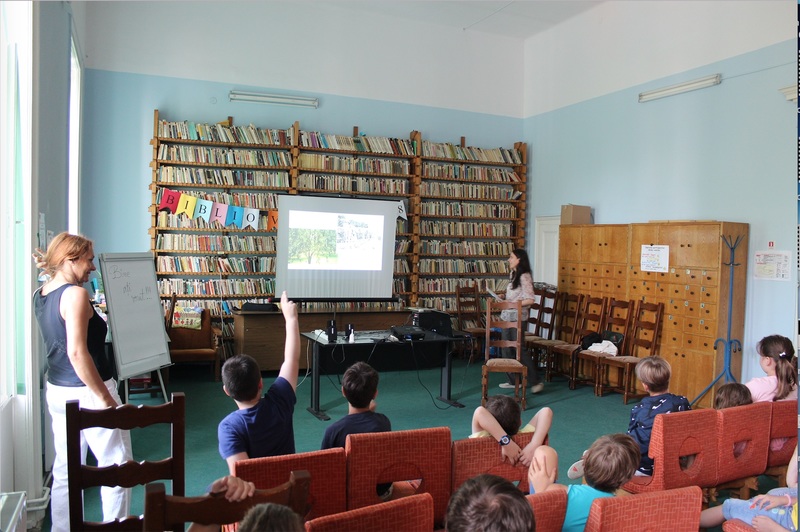 Amelia narrating The Magic Mango at a local library in her hometown to a very engaged group
Amelia narrating The Magic Mango at a local library in her hometown to a very engaged group
Perhaps the lesson to take home from all this is that translation is emotional labour. Perhaps Herta Müller is right when she says that, for her, ‘the criterion of a text’s quality has always been: does it bring about a silent disconnection in the head. Every good sentence flows to a place in the head where what it triggers speaks in something other than words’. As translators, we pull words apart and then we try to rearrange them again to recover that ‘disconnection’ for a different audience. Undoubtedly, some things get lost in this process. But a good many others are gained.
Be the first to comment.
Using stories in the classroom: illuminating sessions with Teach for India in Delhi and Bangalore
Posted by Remya Padmadas on November 03, 2017Outreach team member Khyati Datt writes about our recent workshops with Teach For India in Bangalore and Delhi.
StoryWeaver has collaborated with many organisations in order to take stories to more and more children. One such organisation that works with children directly is Teach For India and we conducted a StoryWeaver workshop with the Teach for India fellows in Delhi and Bangalore. We invited fellows from the organisation to spend a few hours with us and brainstorm around ways that stories could be integrated with everyday teaching in the classrooms.
With the fellows coming straight from school, the workshops were shorter than our usual workshops but the fellows were actively engaging with us despite the long tiring day that they’d just had.
The session in Delhi began with a quick round of introductions where the fellows told us their role in the organisation. It was great to see that the participants worked in different verticals of the organisation - there were Program Managers, First year fellows, Content Advisors and TFI alums in the audience. After a brief introduction of Pratham Books and StoryWeaver, we dived into the demo of StoryWeaver and the functions available on the platform.
We discussed with them the various ways that different organisations were using the content on the platform to give the participants ideas on how to combine learning with fun! We also saw videos of teachers and organisations using StoryWeaver with their students and shared our thoughts on whether stories could help make classes more joyful. The fellows then went on to their first task of the session - looking for interesting stories and plugging them in in a lesson plan. While some fellows decided to use the story for Reading Comprehension, others chose to use a STEM book to introduce the children to the concept.
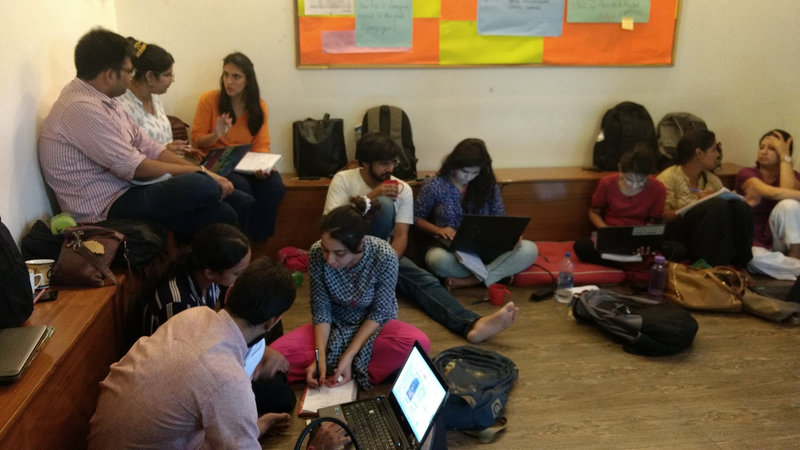
After hearing the thoughts of the participants on what they’d seen so far, we asked them to do the most interesting task of the workshop - creating stories! The fellows saw this as an opportunity to create the kind of stories that they thought would work in their classrooms and added a fun element to their lessons. We received some great stories from the audience, with flying animals and dream schools!
We ended the session with a question - actionable ways through which stories could be used with children. While some fellows were excited to share their takeaways from the session with other fellows, the alums wanted to understand how stories could be used in their context.
We conducted the same workshop with the Teach For India Bangalore fellows. All the participants were in their first year of fellowship and were happy to share their experience in the classrooms and discuss with us ideas on how they could use stories to make children learn in a joyful manner!
Both the workshops gave us an opportunity to interact with people who were working with children directly and we thank Teach For India Delhi and Teach For India Bangalore for arranging the same.
If you are interested in hosting a similar workshop for your organisation, drop us an email on [email protected].
Be the first to comment.